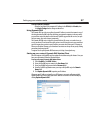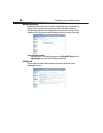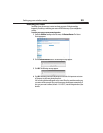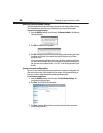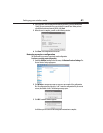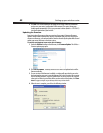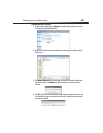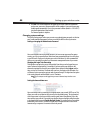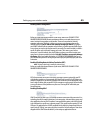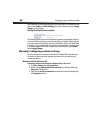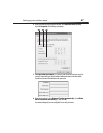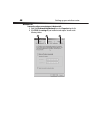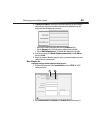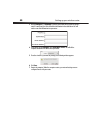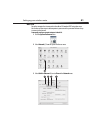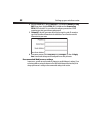
Setting up your wireless router
45
Enabling remote management
Before you enable this advanced feature of your router, MAKE SURE YOU HAVE SET THE
ADMINISTRATOR PASSWORD. Remote management allows you to make changes to your
router’s settings from anywhere on the Internet. There are two methods of remotely
managing your router. The first is to allow access to your router from anywhere on the
Internet by selecting Any IP address can remotely manage the Router. By typing in
your WAN IP address from any computer on the Internet, you will be presented with a login
screen where you need to type the password of your router. The second method is to allow a
specific IP address only to remotely manage your router. This is more secure, but less
convenient. To use this method, enter the IP address you know you will be accessing your
router from in the space provided and select Only this IP address can remotely manage
the Router. Before you enable this function, it is STRONGLY RECOMMENDED that you set
your administrator password. Leaving the password empty will potentially open your router
to intrusion.
Enabling/Disabling Network Address Translation (NAT)
Note: This feature should only be modified by advanced users.
Before you enable this advanced feature of your router, MAKE SURE YOU HAVE SET THE
ADMINISTRATOR PASSWORD.
NAT is the method by which your router shares the single IP address assigned by your ISP
with the other computers on your network. NAT should only be used if your ISP assigns you
multiple IP addresses or you need NAT disabled for an advanced system configuration. If you
have a single IP address and you turn NAT off, the computers on your network will not be able
to access the Internet. Other problems may also occur. Turning off NAT will disable your
firewall functions.
Enabling/Disabling UPnP
UPnP (Universal Plug-and-Play) is yet another advanced feature offered by your router. It is a
technology that offers seamless operation of voice messaging, video messaging, games, and
other applications that are UPnP-compliant. Some applications require your router’s firewall
to be configured in a specific way to operate properly. This usually requires opening TCP and
UDP ports. An application that is UPnP-compliant has the ability to communicate with your
router, basically “telling” your router which way it needs the firewall configured. Your router
shipped with the UPnP feature disabled. If you are using any applications that are



